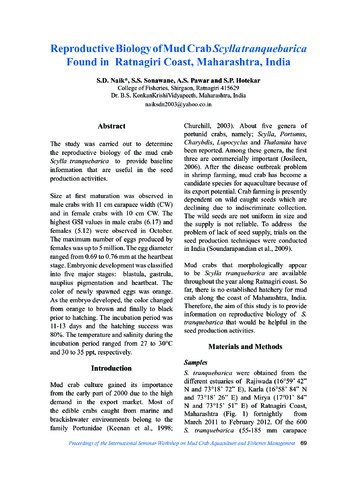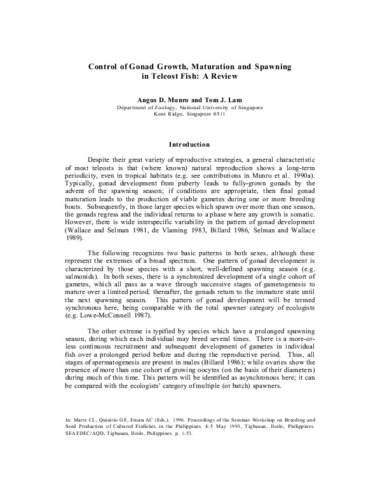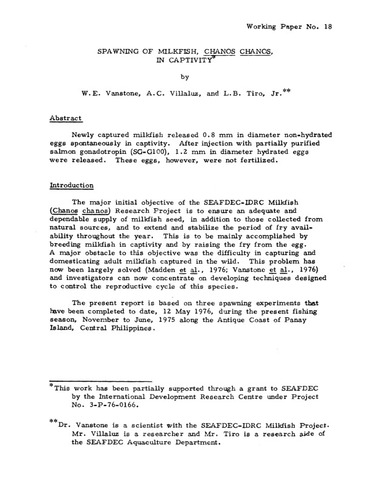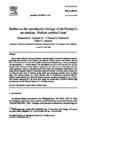Reproductive biology of mud crab Scylla tranquebarica found in Ratnagiri coast, Maharashtra, India
- Global styles
- MLA
- Vancouver
- Elsevier - Harvard
- APA
- Help
Share
นามธรรม
The study was carried out to determine the reproductive biology of the mud crab Scylla tranquebarica to provide baseline information that are useful in the seed production activities.Size at first maturation was observed in male crabs with 11 cm carapace width (CW) and in female crabs with 10 cm CW. The highest GSI values in male crabs (6.17) and females (5.12) were observed in October. The maximum number of eggs produced by females was up to 5 million. The egg diameter ranged from 0.69 to 0.76 mm at the heartbeat stage. Embryonic development was classified into five major stages: blastula, gastrula, nauplius pigmentation and heartbeat. The color of newly spawned eggs was orange. As the embryo developed, the color changed from orange to brown and finally to black prior to hatching. The incubation period was 11-13 days and the hatching success was 80%. The temperature and salinity during the incubation period ranged from 27 to 30°C and 30 to 35 ppt, respectively.
การอ้างอิง
Naik, S. D., Sonawane, S. S., Pawar, A. S., & Hotekar, S. P. (2015). Reproductive biology of mud crab Scylla tranquebarica found in Ratnagiri coast, Maharashtra, India. In E. T. Quinitio, F. D. Parado-Estepa, Y. C. Thampi Sam Raj, & A. Mandal (Eds.), Proceedings of the International Seminar-Workshop on Mud Crab Aquaculture and Fisheries Management, 10-12 April 2013, Tamil Nadu, India (pp. 69-77). Tamil Nadu, India: Rajiv Gandhi Centre for Aquaculture (MPEDA).
Type
Conference paperISBN
9788192989815
Related items
Showing items related by title, author, creator and subject.
-
Control of gonad growth, maturation and spawning in teleost fish: A review
Munro, Angus D.; Lam, Tom J. (Aquaculture Department, Southeast Asian Fisheries Development Center, 1996)Despite their great variety of reproductive strategies, a general characteristic of most teleosts is that (where known) natural reproduction shows a long-term periodicity, even in tropical habitats (e.g. see contributions ... -
Spawning of milkfish, Chanos chanos, in captivity
Vanstone, William E.; Villaluz, Antonio C.; Tiro Jr., Leonardo B. (Aquaculture Department, Southeast Asian Fisheries Development Center, 1976)Newly captured milkfish released 0.8 mm in diameter non-hydrated eggs spontaneously in captivity. After injection with partially purified salmon gonadotropin (SG-G100), 1.2 mm in diameter hydrated eggs were released. These ... -
Studies on the reproductive biology of the Donkey's ear abalone, Haliotis asinina Linné
Capinpin, Emmanuel C., Jr.; Encena II, Vincent C.; Bayona, Nestor C. (Elsevier, 1998)The sex ratio, initial size at sexual maturity, spawning period, time interval between successive spawnings and fecundity of the Donkey's ear abalone, Haliotis asinina were studied. The sex ratio of wild abalone (>60 ...





